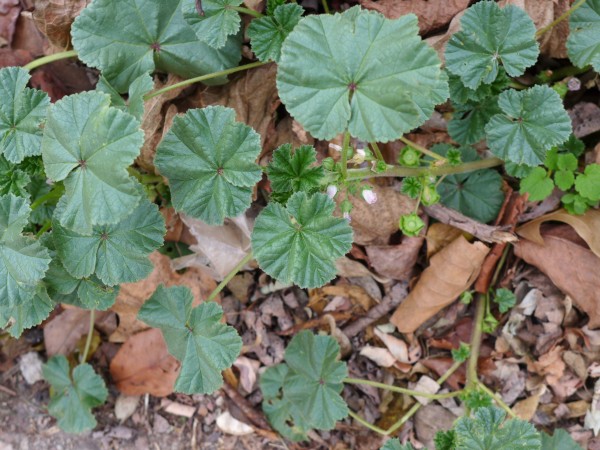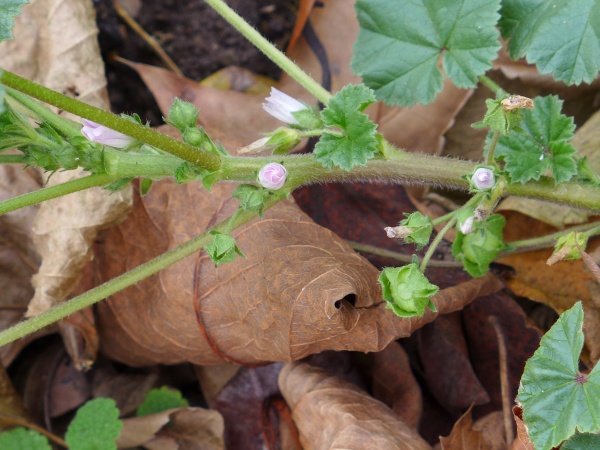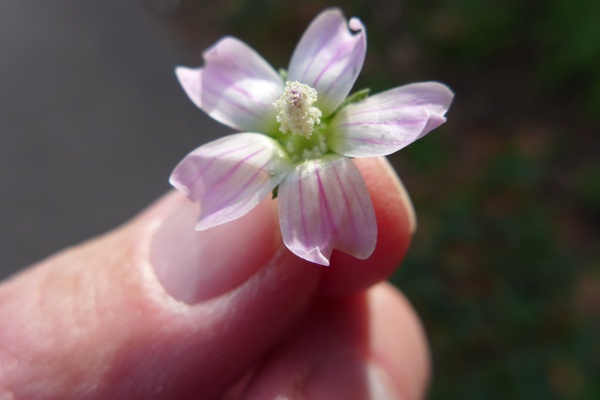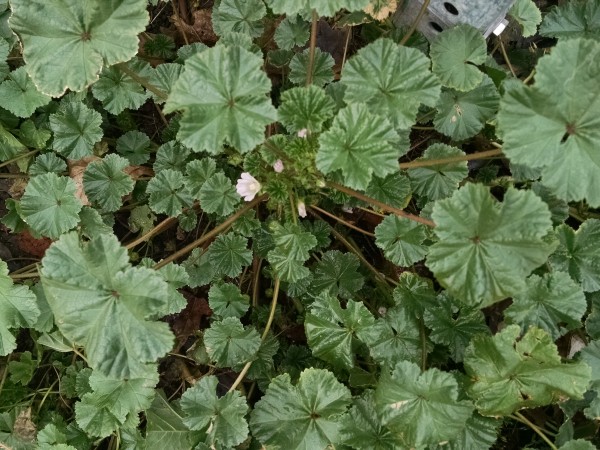
13 December 2015
Here’s a plant that’s quite visible in my neighborhood this month even though the growing season has ended. I don’t know what it is but I suspect it’s an alien and possibly invasive because it shows off a number of imported/invasive features.
- Imported: Its leaves are very green, suggesting it’s winter light trigger expects a more northern location.
- Imported: It’s still producing flowers in December, another indication that it believes winter hasn’t arrived.
- Invasive: It grows in waste places, especially in disturbed soil at the edge of sidewalks.
- Invasive: It can become very dense and take over the area where it’s growing.
Here’s a look at the arrangement of the stems. Notice that they’re hairy.

And here’s the flower. I forced this one open.

One more look at a dense mat of it.

Do you know the name of this plant? My guess is that it’s from Asia, perhaps Japan.
If you know the answer, please leave a comment!
LATER: Wow! You’re quick! Fran, Carolyn and Doris have already identified it as common mallow (Malva neglecta) or cheeseweed. Read the comments to find out why it has this unusual name. By the way, it’s edible.
Here are two resources for more information: University of California’s Integrated Pest Management recommendation for this plant and Pennsylvania Street Gardens plant profile.
(photos by Kate St. John)
It looks like cheeses or common mallow which is an alien.
Looks like Malva neglecta, or common mallow weed-also known as cheeseweed, for some reason I don’t know! An invasive annual here, native to a broad range of Asia and Europe. Apparently the seeds are very high in protein, and can be eaten!
It is called common mallow. It gets a very long and strong taproot that often breaks when I try to pull it out of my garden. (Insuring that it will regrow!)
For those curious about the “cheeseweed” common name, it’s because mallow contains chemicals that will coagulate milk, and the plant can be used instead of rennet in cheesemaking.
As an aside, I generally agree that a plant still flowering at this time of year is a strong indicator of it being imported … but this strange warm fall/winter, a ton of things have flowered “out of season.” I don’t know if mallow weed would still be flowering now in a more normal year, imported or not.
Funny that it also grows in the Tucson area, but it’s not blooming right now.
I don’t think the fact a plant is blooming in mid-December is an indicator it’s not native–especially with the mild weather we’ve had this year. Speaking of non-natives and “invasives” the book, “The New Wild” by Fred Pearce made me re-think everything I thought I knew about so-called invasives. Definitely worth a read whether you agree with what he says or not. It really challenges a lot of what we take as fact in the science of ecology.
Mary Jane, your comment about mild weather has me re-thinking that statement. Hmmmm. This is such a weird weather year!
Kate, a long time ago, 15-20 years, I took Esther to Moraine State Park for a walk the day after Thanksgiving. We counted 67 different species of plants still holding at least one bloom. It was a more “normal” fall that year with several killing frosts, and a few light snowfalls, but plants were still in bloom. I found it to be quite a revelation to see that many still blooming at that late date. It’s been a very strange year and not just recently. All the rain in May followed by months of drought and then the unusually warm autumn.
Mary Jane, I’ve noticed that in my neighborhood the majority of blooming plants are imported — not necessarily invasive but certainly non-native. I haven’t been to less disturbed locations in the past couple of weeks to check on blooming status. Are natives blooming out your way?